London’s resilience during the tumultuous years of World War II was embodied by the iconic leadership of Winston Churchill. As the city endured the devastation of relentless bombing raids, Churchill’s rousing speeches and unwavering resolve inspired the British people to stand firm against the Nazi onslaught. From the secretive Cabinet War Rooms to the grand halls of the Houses of Parliament, Churchill’s strategic brilliance guided the nation’s war efforts, while historic landmarks like Westminster Abbey became symbols of Britain’s indomitable spirit. Uncovering the stories of how London persevered through this challenging period offers a fascinating glimpse into the city’s storied past.
Key Points
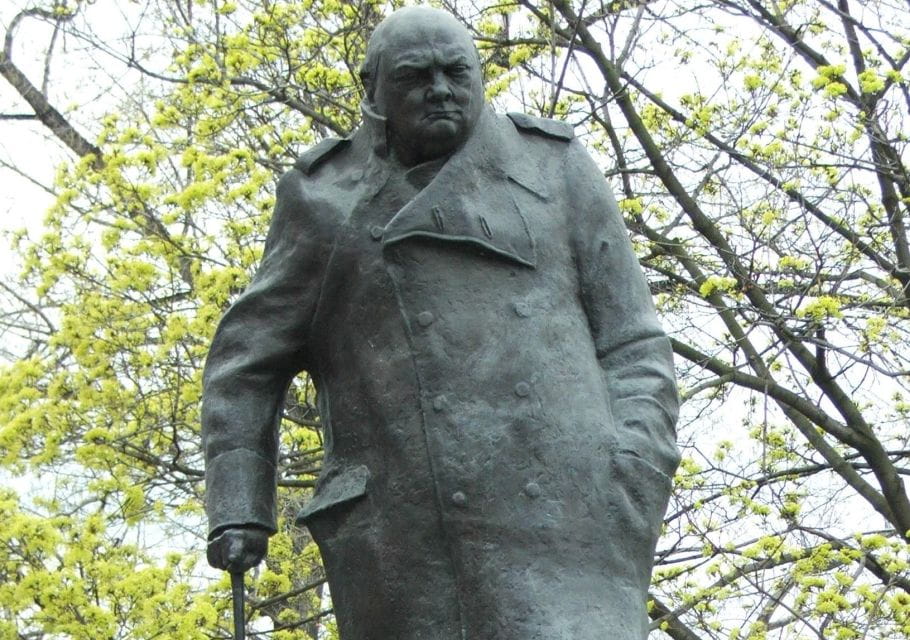
- As Prime Minister, Winston Churchill led Britain’s unwavering resolve against the Nazi onslaught during the Blitz bombings of London in World War II.
- Churchill’s rousing speeches broadcast across Britain rallied the nation’s spirit, inspiring the stoic resilience of Londoners in the face of the Blitz’s destruction.
- The Cabinet War Rooms, Churchill’s military command center, served as the nerve center for the British government’s wartime strategy against the Nazis.
- Westminster Abbey, a symbol of British heritage, hosted solemn services for fallen soldiers during the war, with Churchill in attendance as a testament to the nation’s determination.
- The Blitz spirit, exemplified by Londoners’ courage and community support, was essential in Britain’s fight against the Nazis and a key part of Churchill’s wartime leadership.
Wartime London: Bombing Raids and Resilience
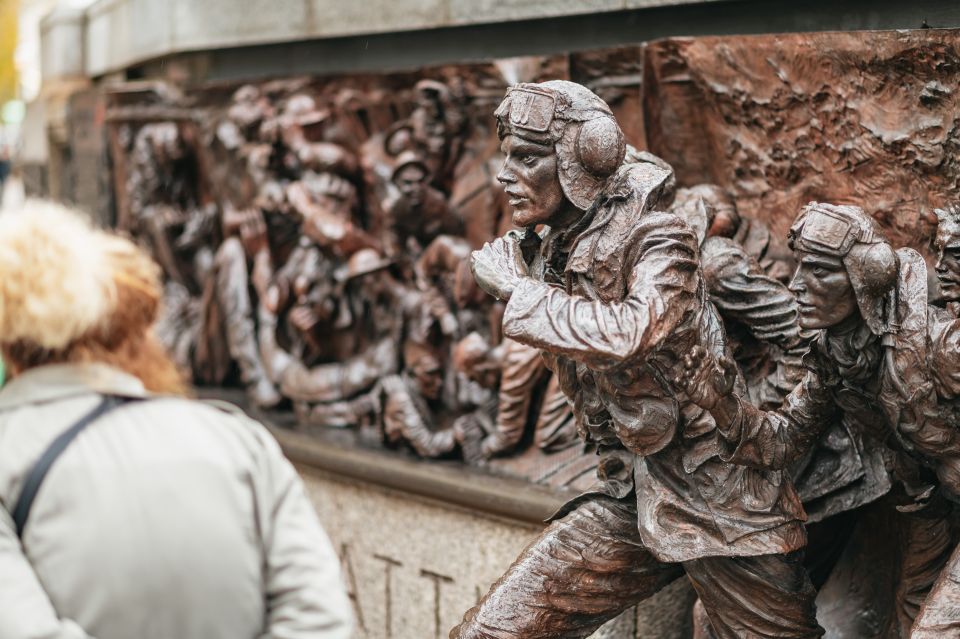
The Blitz, Nazi Germany’s sustained bombing campaign against Britain, brought tremendous destruction to London’s streets, with thousands of buildings reduced to rubble and many lives lost.
Yet, the stoic resilience of the city’s residents in the face of these relentless air raids came to symbolize the indomitable spirit of wartime Britain.
From the discovery of hidden bomb escape hatches to the sight of citizens defiantly carrying on with their daily routines, the tour explores how Londoners refused to be cowed by the Luftwaffe’s onslaught.
Through the eyes of those who lived through the darkest hours, visitors will gain a deeper understanding of the courage and determination that enabled the nation to ultimately triumph over the Nazi menace.
You can also read our reviews of more tours and experiences in London.
Churchill’s Leadership During World War II
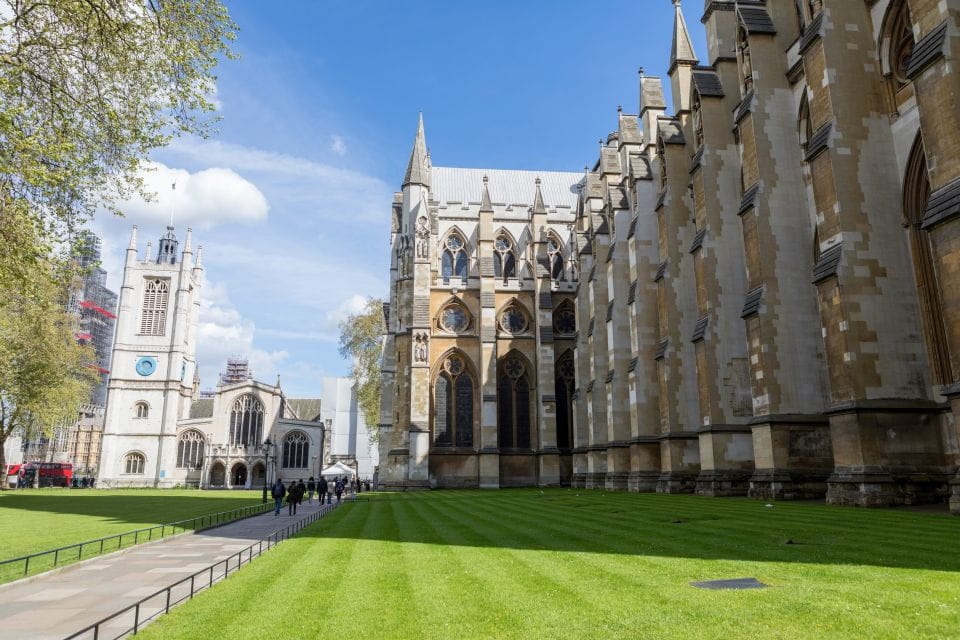
Amid the devastation wrought by the Blitz, Britain’s most steadfast leader, Winston Churchill, emerged as the undisputed symbol of the nation’s unwavering resolve. His unwavering determination to deliver the Nazi menace rallied the country, inspiring Londoners to endure the relentless bombing raids with unwavering courage.
Churchill’s rousing speeches, broadcast across the airwaves, ignited a spirit of defiance and resilience that united the British people. From the Cabinet War Rooms beneath Whitehall, he directed the country’s military strategy, making tough decisions that secured crucial victories.
Churchill’s unwavering leadership during the darkest hours of the war cemented his legacy as one of the greatest statesmen of the 20th century.
Westminster Abbey and Its Wartime Role
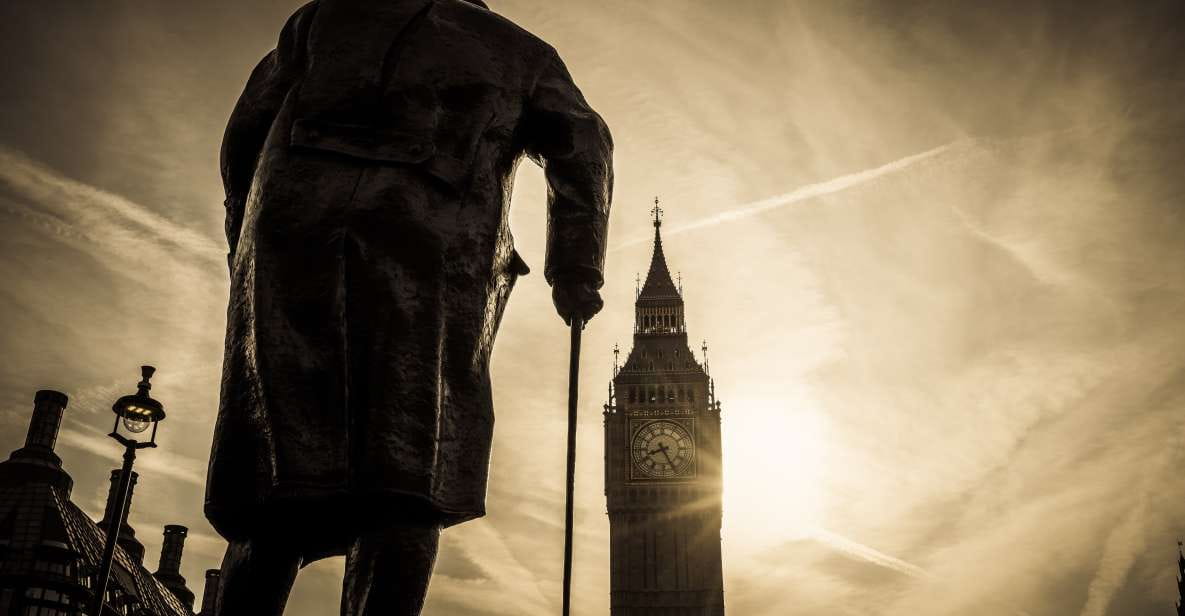
During the tumultuous years of World War II, Westminster Abbey played a vital role in the nation’s wartime efforts, serving as a steadfast symbol of British resilience and heritage. The abbey’s Gothic spires bore witness to the capital’s darkest hours, as its hallowed halls became a sanctuary for prayer, reflection, and remembrance.
The abbey’s storied history took on new significance:
- It hosted solemn services for fallen soldiers, honoring their sacrifice.
- Its crypt provided a safe haven for the country’s priceless treasures, shielding them from the Blitz’s devastation.
- Churchill himself attended services at the abbey, drawing strength and inspiration from its enduring legacy.
- The abbey’s bells continued to ring, a defiant reminder of Britain’s unwavering spirit in the face of adversity.
The Blitz Spirit: Courage of Londoners
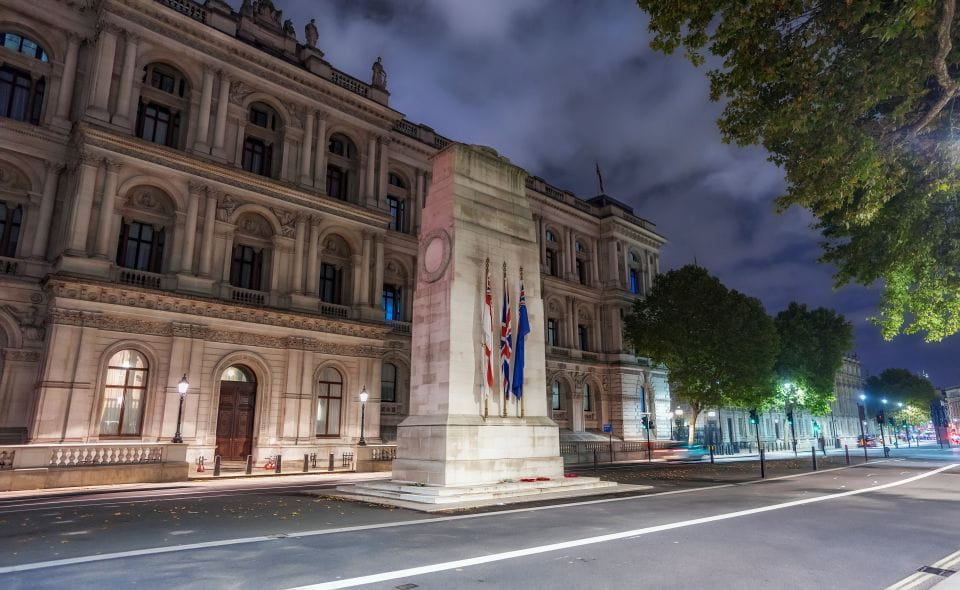
Londoners displayed unwavering fortitude as the city endured the relentless Blitz bombings, showcasing the indomitable ‘Blitz spirit’ that would define their nation’s wartime resilience.
Despite the nightly air raids, Londoners refused to be cowed, filing into shelters and emerging with steely determination to carry on. They formed volunteer fire brigades, patrolled the streets, and provided aid to those in need.
This profound sense of community and collective strength inspired Churchill, who famously declared, ‘We shan’t flag or fail.’ The Blitz demonstrated the unbreakable resolve of the British people, a spirit that would prove essential in the fight against the Nazis and ultimate victory.
Discovering Hidden Bomb Escape Hatches
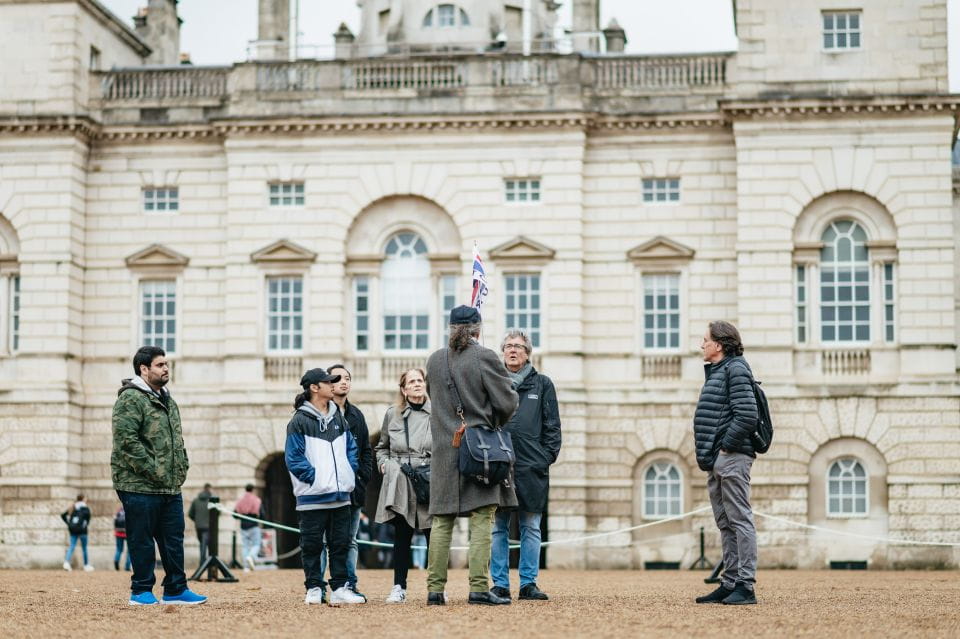
As part of the wartime preparations, many buildings in London concealed hidden bomb escape hatches, providing a last resort for those seeking refuge during the Blitz. These concealed exits were often cleverly disguised, blending seamlessly into the existing infrastructure.
During the tour, visitors can:
- Discover the secret location of one such hatch, carefully hidden from view.
- Imagine the panic and fear as Londoners rushed to these shelters, seeking safety from the overhead onslaught.
- Learn how these escape routes were meticulously planned and maintained, ready to be used at a moment’s notice.
- Gain a deeper appreciation for the ingenuity and resourcefulness of the British people in the face of adversity.
- Ghost, Ghouls and Gallows Walking Tour With Boat Ride
- Inner Circle Access of Stonehenge Including Bath and Lacock Day Tour From London
- Windsor Castle, Stonehenge, and Oxford Day Trip From London
- Stonehenge, Windsor Castle and Bath Day Trip From London
- London Walking Food Tour With Secret Food Tours
- The Premier Classic London: Private 4-Hour Tour in a Black Cab
Visiting the Houses of Parliament and Downing Street
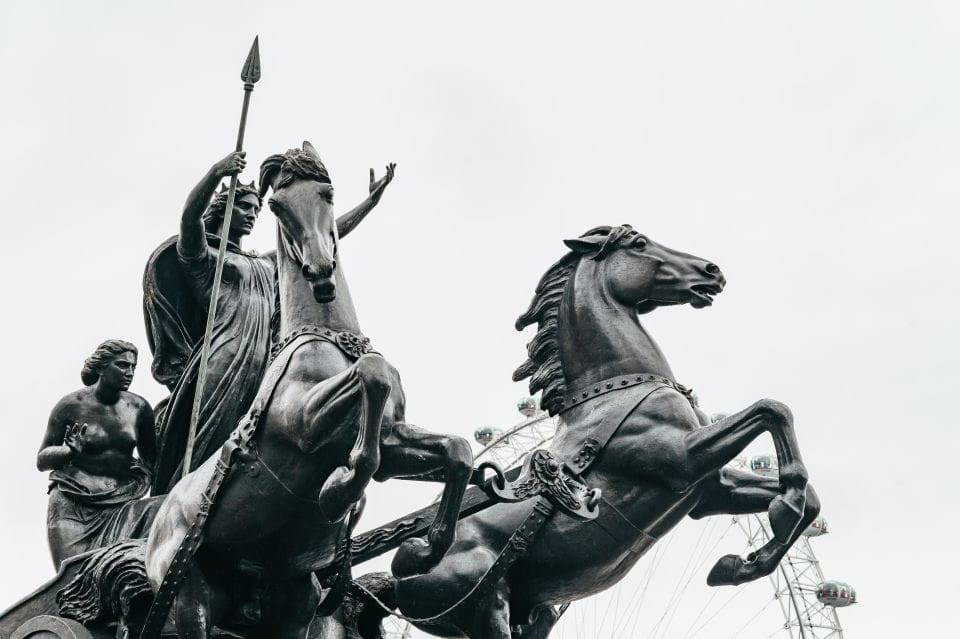
The tour then moves on to the iconic Houses of Parliament, where Churchill’s leadership was instrumental in guiding Britain through the war. Visitors can stand in the shadow of Big Ben and imagine the intense debates that took place within those historic walls as Churchill and his cabinet charted the course of the nation.
Just around the corner, the famous 10 Downing Street provides a glimpse into the nerve center of the British government during the war. The famous black door, which has welcomed countless prime ministers, is a powerful symbol of the leadership and resolve that saw the country through its darkest hours.
Exploring these sites brings the past to life and underscores Churchill’s pivotal role in Britain’s wartime triumph.
Whitehall and London’s Wartime Memorials
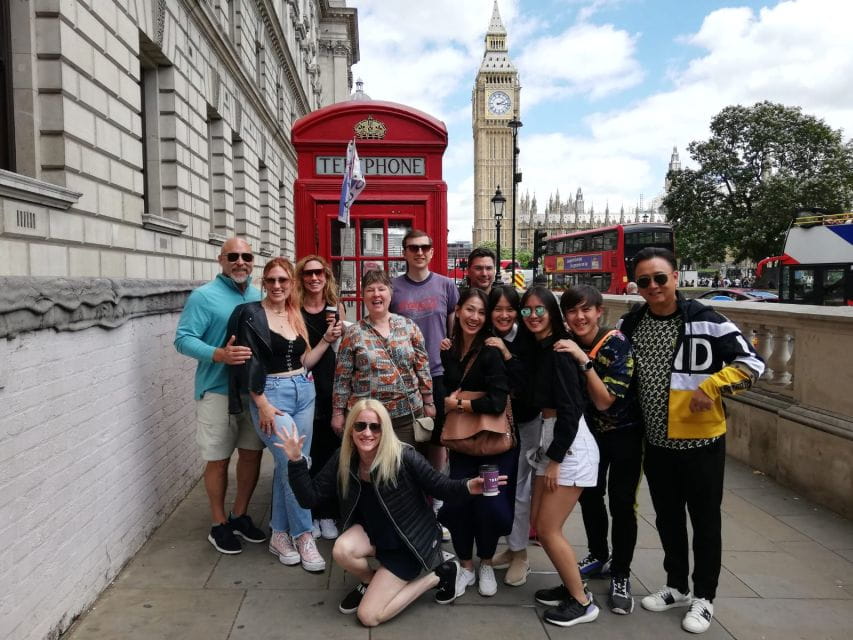
After exploring the iconic Houses of Parliament and 10 Downing Street, the tour then ventures down Whitehall, where towering war memorials stand as solemn reminders of the sacrifices made during the conflict. Visitors can’t help but feel a profound sense of reverence as they gaze upon these monuments, which commemorate the bravery and determination of the British people in the face of immense adversity.
The tour highlights key wartime memorials, including:
- The Cenotaph, a stark and powerful memorial to the fallen.
- The Women’s War Memorial, honoring the vital contributions of women.
- The Royal Air Force Memorial, a tribute to the heroic pilots who defended the skies.
- The Guards Memorial, commemorating the unwavering service of Britain’s elite infantry regiments.
Meeting Point and Booking Details
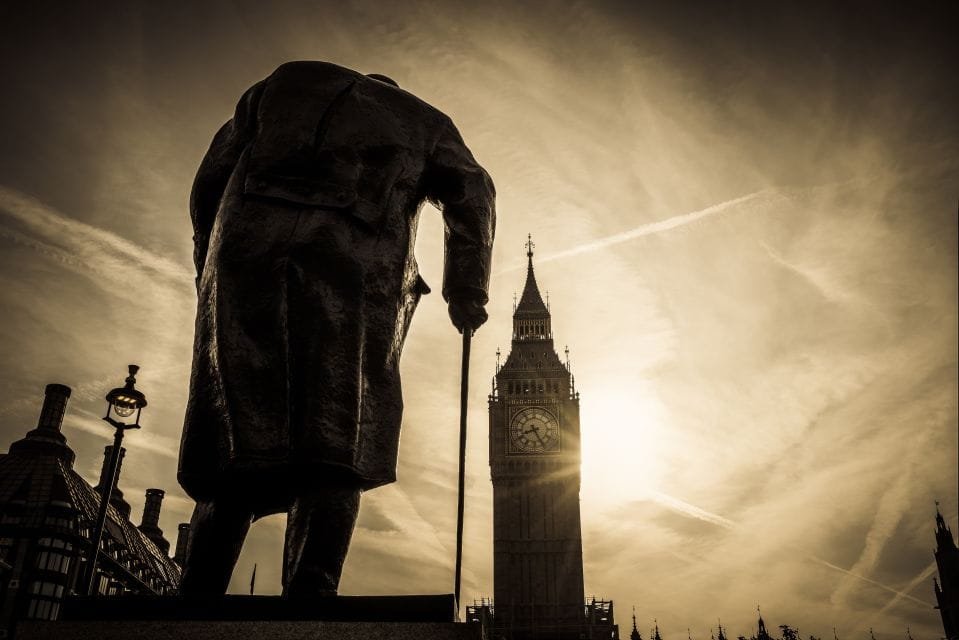
To begin the tour, guests will meet their guide outside Westminster Underground Station, Embankment exit 2, at the top of the stairs, where the guide will be carrying a Fun London Tours flag to easily identify the group. The booking details make the experience seamless – guests can reserve their spot now and pay later, plus enjoy free cancellation up to 24 hours in advance. This flexibility allows for a stress-free planning process.
| Booking Details | |
|---|---|
| Reserve Now | Pay Later |
| Free Cancellation | 24 hrs in Advance |
| Meeting Point | Westminster Underground Station, Embankment exit 2 |
With the convenient meeting location and flexible booking options, guests can look forward to embarking on an immersive journey through London’s wartime history with their knowledgeable guide.
Frequently Asked Questions
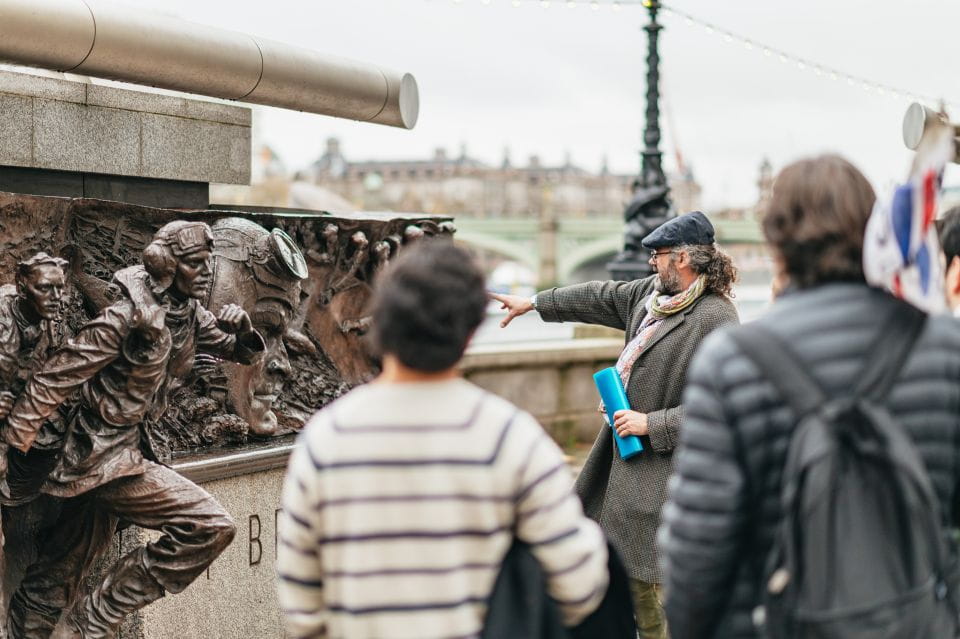
Is the Tour Suitable for Children?
The tour appears family-friendly, with its wheelchair accessibility and live guide offering an engaging historical experience. However, some content about WWII bombing raids and wartime events may not be suitable for young children.
What Is the Dress Code for the Tour?
The tour has a casual dress code, allowing guests to dress comfortably for a 1.5-hour walking tour. Participants should wear weather-appropriate attire and comfortable walking shoes to fully enjoy the sights and stories of wartime London.
Can the Tour Be Done in Other Languages?
The tour is offered solely in English, according to the overview. Though other language options are not mentioned, the tour guide may be able to provide translation assistance or accommodate special requests if arranged in advance.
Are There Any Discounts Available for Seniors or Students?
There are no specific discounts mentioned for seniors or students on this tour. However, the tour is reasonably priced at £20 per person, making it an affordable option for a wide range of travelers.
Is There an Option to Extend the Tour Duration?
Yes, there is an option to extend the tour duration. Customers can arrange for a longer 2-hour tour through the tour company for an additional fee, allowing more time to explore the sites and learn about London’s WWII history in greater depth.
Recap
Winston Churchill’s resolute leadership during World War II embodied London’s indomitable spirit.
From the Cabinet War Rooms to the iconic landmarks, the city’s resilience shone through the devastation of the Blitz.
Today, visitors can explore this history, discovering hidden bomb escape hatches and paying respects at Whitehall’s wartime memorials.
London’s wartime journey remains a testament to the courage and determination that carried the nation through its darkest hours.
More Tour Reviews in London
Not for you? Here's more things to do in London we have recnetly reviewed
- London: Old City Walking Tour
- London: Private Flying-dress Photoshoot @jonadress
- Dragaoke – Drag Hosted Karaoke!
- London: British Museum Private Tour & Tickets Included
- London: The Magician’s Table – Up-Close Magic Show
- London: British Museum Highlights: Private Tour
- Tour a Piedi di Harry Potter a Londra
- London: The Great British Rock and Roll Music Walking Tour
- London: Christmas Lights Tour – With Christmas Music
- City(Tower) of London by LE GRAND – London’s Luxury Bus Tour
- Orpington: Silver Ring Making Workshop
- Secret Old London Walking Tour
